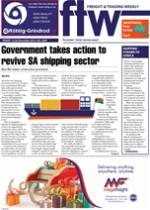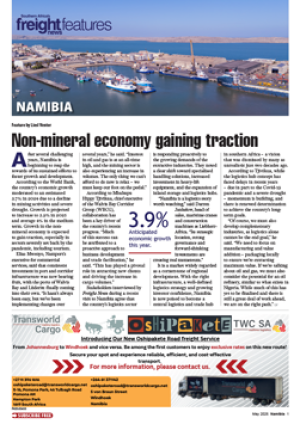Two of the world’s Top 20
container shipping lines,
Germany’s Hapag-Lloyd and
Chile’s CSAV, are in talks
about a potential merger.
Hapag-Lloyd currently
operates the world’s sixthlargest
container ship fleet
with a 4.2% share of the
world’s fleet, according to
the French-based shipping
information service,
Alphaliner. The CSAV fleet
ranks number 20, with a 1.5%
share.
If the two lines combined
(to form a 5.7% share), that
would create the world’s
fourth-largest container ship
fleet after CMA CGM, which
holds an 8.5% share, and
before Evergreen Line with
4.7%.
Information released
to FTW by Hapag-Lloyd
revealed that discussions
were being held about what
it terms “a possible business
combination or any other form
of association”. To date these
discussions have not resulted
in any binding or non-binding
agreement between the
parties.
But Hapag assured
FTW, should any relevant
development occur, more
information would be released
to this publication.
Meanwhile, in Chile, shares
in CSAV surged after Die Welt
newspaper reported that Latin
America’s largest container
shipper was negotiating a
merger with its German rival.
Last Thursday (just after
the announcement), the shares
rose as much as 27%, the
biggest intraday advance since
March 1, 2012, and were up
14% at close of business at the
Santiago stock exchange.
This is bound to be
welcomed as CSAV has been
in a dire financial state since
2010. The billionaire Luksic
family – which holds a 46%
stake – has put more than the
equivalent of R10 billion into
CSAV in the past two years,
after the company lost a record
R12.5bn in 2011.
Also, CSAV’s 86% loss in
the past three years is the
worst performance among
peers tracked by Bloomberg,
as the industry struggled to
recover from a slump in global
shipping rates.
Hapag-Lloyd also came
close to collapse in 2009
but was eventually rescued
in a complex deal with
a consortium including
Hamburg business people and
the City of Hamburg.
In response to a glut of
new vessels, operators – such
as AP Moller-Maersk, MSC
and CMA CGM, the world’s
top three – have formed the
P3 Alliance, to lower costs
and eliminate excess capacity
on trade routes. Similar
sentiments may be behind the
possible tie-up between the
German and Chilean carriers.
Meantime, Hapag Lloyd
has obviously identified the
advantages of mergers and
alliances. In March 2012, it
was one of the six founder
members of the G6 Alliance –
now on an expansion course to
extend its current competition
with P3 onto the TransPacific
and TransAtlantic trades.
It has also been looking for
a possible merger with another
line for some time.
Earlier this year, it and
fellow German line, Hamburg
Süd, ended merger talks which
had been under way since
December 2012.
CAPTION
Hapag-Lloyd set for merger? Combined the lines would create the fourth-largest fleet.

